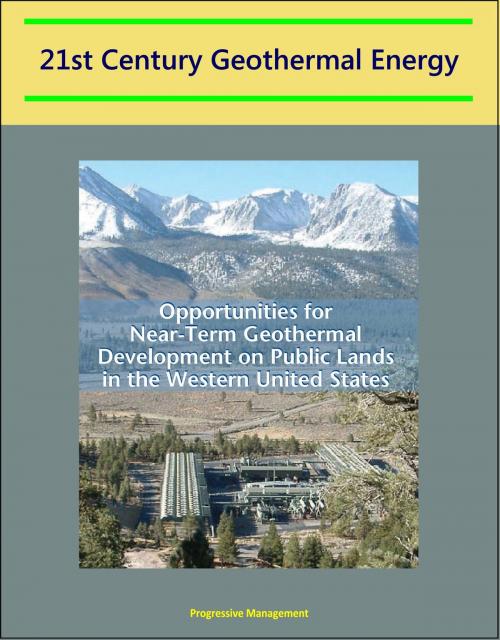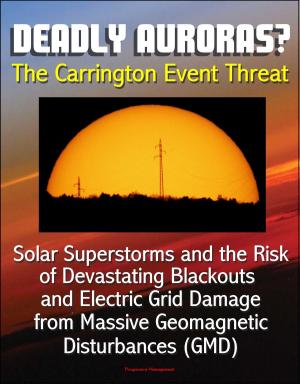21st Century Geothermal Energy: Opportunities for Near-Term Geothermal Development on Public Lands in the Western United States
Nonfiction, Science & Nature, Technology, Power Resources| Author: | Progressive Management | ISBN: | 9781311325754 |
| Publisher: | Progressive Management | Publication: | August 28, 2014 |
| Imprint: | Smashwords Edition | Language: | English |
| Author: | Progressive Management |
| ISBN: | 9781311325754 |
| Publisher: | Progressive Management |
| Publication: | August 28, 2014 |
| Imprint: | Smashwords Edition |
| Language: | English |
This report provides an analysis of the geothermal energy sites on public lands that represent the best opportunities for near-term development. This report's objective is to present an analysis requested by the Geothermal Program of the U.S. Bureau of Land Management to quickly provide information on priorities for land-use planning to reduce impediments to access to public lands for geothermal development.
Geothermal energy is a domestic energy source. Clearly, geothermal energy can greatly contribute to the nation's energy mix. It is clean and available 24 hours a day. The United States has an estimated 2800 MW of geothermal installed capacity; worldwide, the figure is 8000 MW. The U.S. Geological Survey estimated in 1979 that the hydrothermal geothermal power potential in the United States was approximately 23,000 MW. In addition, thousands of installations are using geothermal energy for agriculture, aquaculture, district heating and cooling, and other direct uses. This estimate of geothermal potential could be even higher. Using geothermal energy reduces our dependence on imported fuels, creates jobs in the United States, and more favorably balances the U.S. global trading position. Geothermal energy has environmental benefits. Electricity produced from geothermal resources in the United States prevents the emission of 22 million tons of carbon dioxide, 200,000 tons of sulfur dioxide, 80,000 tons of nitrogen oxides, and 110,000 tons of particulate matter every year compared to conventional coal-fired power plants. A geothermal binary power plant, operating with a closed system, emits virtually nothing to the atmosphere. Technologies have been developed to recycle minerals contained in geothermal fluid so that little or no disposal or emissions occur. Also, in many geothermal plants, the hot water extracted from the Earth is recycled back into the resource, thereby replenishing the resource and eliminating any discharge of the water. Geothermal energy is efficient and reliable for baseload electricity production. The average geothermal power plant efficiently uses land space, requiring a total of only 400 square meters of land to produce 1 gigawatt of power over 30 years. By contrast, coal and nuclear plants require land for open-pit and other mining, and additional land to store and transport the fuel. In addition, the average geothermal power plant produces electricity 90% of the time, compared with 65% to 75% for coal- and nuclear-powered plants.
This report provides an analysis of the geothermal energy sites on public lands that represent the best opportunities for near-term development. This report's objective is to present an analysis requested by the Geothermal Program of the U.S. Bureau of Land Management to quickly provide information on priorities for land-use planning to reduce impediments to access to public lands for geothermal development.
Geothermal energy is a domestic energy source. Clearly, geothermal energy can greatly contribute to the nation's energy mix. It is clean and available 24 hours a day. The United States has an estimated 2800 MW of geothermal installed capacity; worldwide, the figure is 8000 MW. The U.S. Geological Survey estimated in 1979 that the hydrothermal geothermal power potential in the United States was approximately 23,000 MW. In addition, thousands of installations are using geothermal energy for agriculture, aquaculture, district heating and cooling, and other direct uses. This estimate of geothermal potential could be even higher. Using geothermal energy reduces our dependence on imported fuels, creates jobs in the United States, and more favorably balances the U.S. global trading position. Geothermal energy has environmental benefits. Electricity produced from geothermal resources in the United States prevents the emission of 22 million tons of carbon dioxide, 200,000 tons of sulfur dioxide, 80,000 tons of nitrogen oxides, and 110,000 tons of particulate matter every year compared to conventional coal-fired power plants. A geothermal binary power plant, operating with a closed system, emits virtually nothing to the atmosphere. Technologies have been developed to recycle minerals contained in geothermal fluid so that little or no disposal or emissions occur. Also, in many geothermal plants, the hot water extracted from the Earth is recycled back into the resource, thereby replenishing the resource and eliminating any discharge of the water. Geothermal energy is efficient and reliable for baseload electricity production. The average geothermal power plant efficiently uses land space, requiring a total of only 400 square meters of land to produce 1 gigawatt of power over 30 years. By contrast, coal and nuclear plants require land for open-pit and other mining, and additional land to store and transport the fuel. In addition, the average geothermal power plant produces electricity 90% of the time, compared with 65% to 75% for coal- and nuclear-powered plants.















